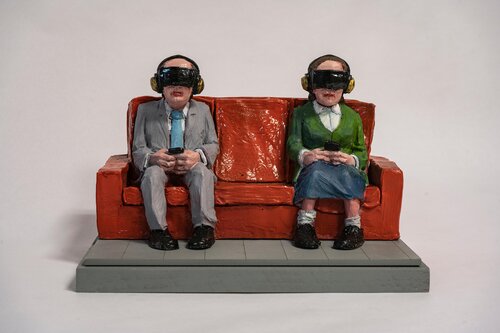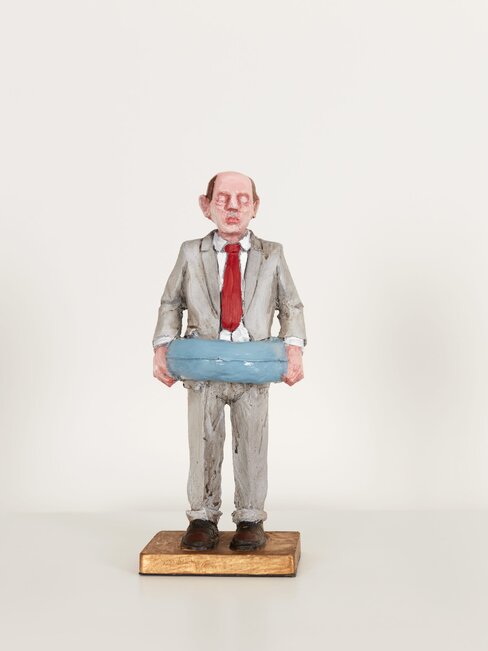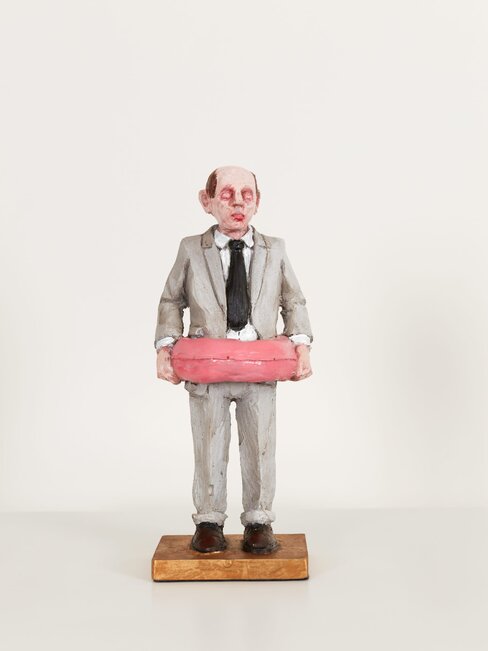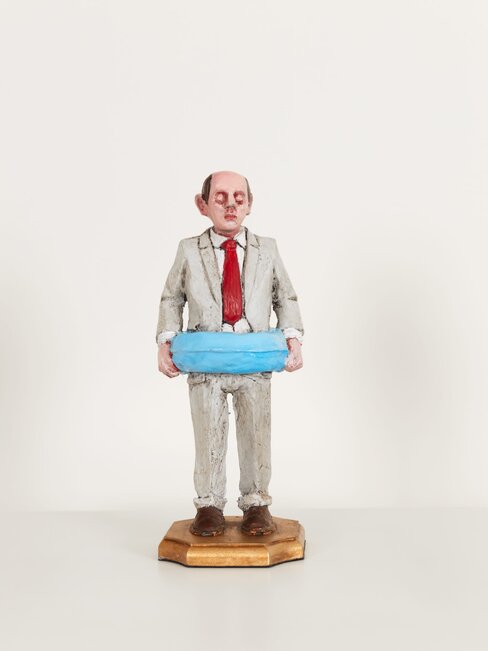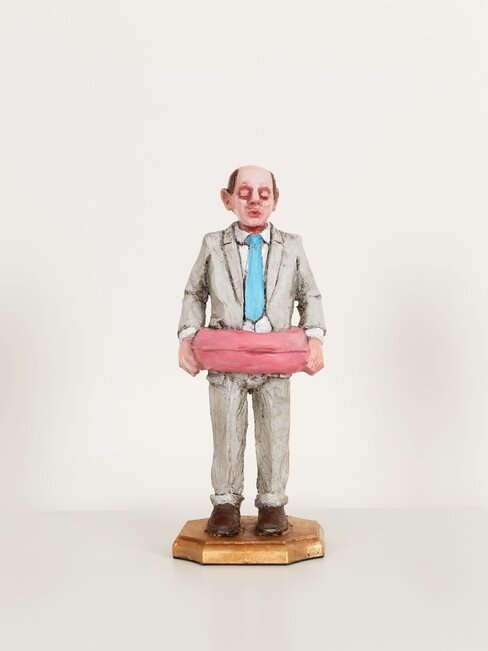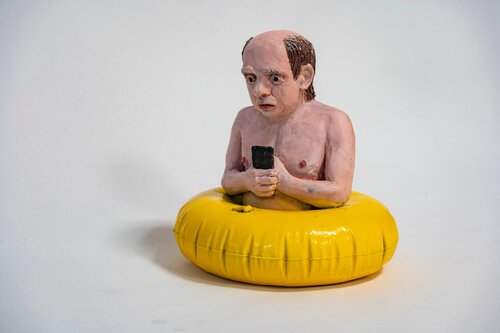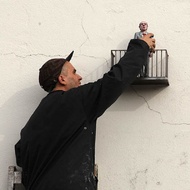
Isaac Cordal
Spain (1974)Lovely figurines form a confrontational mirror
For those who visited the street art festival The Crystal Ship in Ostend, these miniature sculptures might ring a bell. Set up on abandoned architectural sites, these little men by Isaac Cordal (°1974, lives and works in Pontevedra, Spain) touched a nerve. 'The city forms the backdrop for the series of Cement Eclipses I have been creating since 2006, and the chosen location contributes greatly to the meaning. I am particularly interested in places that show the passage of time and our human decadence, appealing to us with their imperfections. For example, I think of windows, cables, wall cavities or other architectural remnants that can serve as a refuge for the sculptures,' Cordal says.
Besides the imperfection of the location, the miniature size of the figures contributes to their poetic character. 'I originally chose that small size from a logistical motive: it gave me more freedom to travel with my work, and required less storage space in the studio. This allowed me to let my work interact with the public space,' Cordal explains. 'I create a momentum there between what is not yet and what will never be. That tension contributes to the dramatic nature of the tableaux.
Although the figurines look lovely at first glance, Isaac Cordal uses them to depict an often destructive image about the human condition as well as our contemporary society. It is no coincidence that most of the figurines show a balding, despondent-looking middle-aged man in a grey suit. 'All the figurines look alike. A closer look reveals that they are visibly exhausted by their work and look anything but happy. Today, as human beings, we all seem to come from the same factory tyre, from the mother mould called neoliberalism. At the same time, they exude a heartbreaking loneliness, which I see as a side effect of individualism. We have turned nature into a theme park, which I think means we have lost the primordial link to our existence,' Cordal says.
Laugh or cry
With his figurines, Cordal comments on our control society, and the way work takes up all our time. The balance between productivity and leisure is lost. 'I hold up a mirror to bureaucracy, power, economics and patriarchy, among other things. Although my images have more to do with submission and obedience, and they don't constantly question everything, I still see parallels with the character Bartleby from Herman Melville's book. I harbour a fascination with the trail of destruction we, under the banner of 'progress', leave behind.'
That when seeing Cordal's work, you sometimes don't know whether to laugh or just cry right now is due to the measured, ambiguous use of humour and irony. 'In that sense, I admire Honoré Daumier's illustrations. He was a master at interpreting the spirit of the times and knew how to respond perfectly to the political context with the necessary humour. Maurizio Cattelan and Erwin Wurm are also examples for their subtle use of humour and irony. How they play with the conventions of the contemporary art world, I admire,' Cordal says. 'On a technical and aesthetic level, the work of Ron Mueck and Anthony Gormley can then charm me. For me, art is a way of trying to understand the world around us. Sometimes I think art can help us create a better world, but mostly I see the arts mainly as a balm for our enigmatic existence.'
